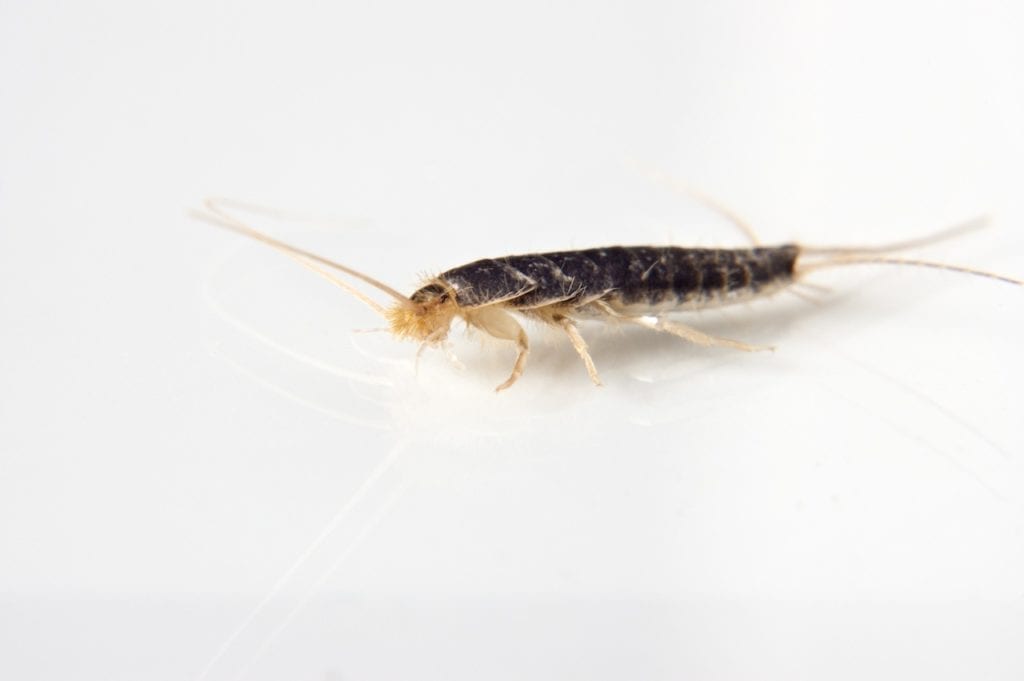
Silverfish Control in Arizona
Silverfish problems can propagate in a variety of Arizona homes, and are nasty pests to have around. Identifying where silverfish live, how they reproduce, and their lifecycle can help you ensure your home is free of the pesky insects.
Silverfish eat a wide variety of foods, including glue, wallpaper paste, book bindings, paper, photographs, starch in clothing, cotton, linen, rayon fabrics, wheat flour, cereals, dried meats, leather and even dead insects. Silverfish often live in damp, cool places such as basements and laundry rooms. Sometimes, they are found in a bathtub, sink or washbasin, unable to climb out.
Firebrats, on the other hand, live in hot, humid places such as attics in summer and near furnaces, fireplaces and heat pipes in winter. Firebrats and silverfish belong to the same insect order, and are very similar in appearance and behavior. Treatment, removal, and control efforts are typically the same for either insect.
Identifying Silverfish in Arizona
Silverfish have flat, elongated bodies 1/3 to 3/4 inch long and broad near the head, tapering toward the rear-somewhat “carrot” shaped. These fragile, wingless insects are covered with scales and have two long, slender antennae at the head and three long, antennae-like appendages at the rear. These three appendages, one directed straight back and the other two curving outward, plus the two antennae, are nearly as long as the body. Sometimes both silverfish and firebrats are known as “bristletails.”
The silverfish adult is about 1/2 inch long with a uniform silvery or pearl-gray color, whereas the four-lined silverfish is about 5/8 inch long and the back displays four dark lines the length of the body. The gray silverfish is about 3/4 inch long and uniform light to dark gray.
Silverfish Life Cycle & Habits
Silverfish are active at night and hide during the day. When objects are moved where they are hiding, they dart out and seek new hiding places. The silverfish lives and develops in damp, cool places (prefers 75 to 95 percent relative humidity), often in the basement, bathroom and kitchen. Large numbers may be found in new buildings where the walls are still damp from plaster and green lumber. Firebrats prefer warmer areas, hence their name, and may stick around near furnaces, boilers, fireplaces, and other heat sources.
Silverfish females may lay over 100 eggs during a lifetime. Eggs are laid singly or two to three at a time in small groups, hatching in three to six weeks. Young silverfish and firebrats resemble adults except being smaller, white and take on the adult color in four to six weeks. Adults may live two to eight years. Firebrats lay about 50 eggs at one time in several batches. Eggs hatch in about two weeks under ideal conditions.
Silverfish, depending on the species, may reach maturity in three to twenty-four months. These insects normally hitchhike into the home in food, furniture, old books, papers and old starched clothing. Unlike other insects, they continue to molt after becoming adults. Forty-one molts have been recorded for one firebrat. Populations do not build up fast. A large infestation in the house usually indicates a longtime infestation.
Preventing Silverfish
Sanitation is important but not entirely effective in reducing populations because insects often reside between wall partitions, in insulation materials, in books and papers, among book shelves and in other protected places. However, be sure to remove old stacks of newspapers, magazines, papers, books and fabrics plus foodstuffs spilled and stored for long periods of time.
Often, reducing available water and lowering the home’s relative humidity with dehumidifiers and fans is helpful. Repair leaking plumbing and eliminate moisture around laundry areas. Lighting a dark, sheltered area may force these insects to move to new sites where they can be controlled more easily. Once the infestation has been eliminated, sanitation will help prevent re-infestation.
Silverfish Exterminators
While DIY efforts to eliminate a silverfish or firebrat infestation can work, silverfish are nocturnal and good hiders, so it’s likely you will not clear out all of the invasive insects. Professional assistance will help and greatly increase your chances of completely removing a current silverfish problem while reducing the potential for a return infestation.
If you notice a silverfish infestation in your Arizona home, contact a professional pest control company like the silverfish experts at Bug Guardian to thoroughly evaluate and exterminate your silverfish problem quickly and efficiently.
